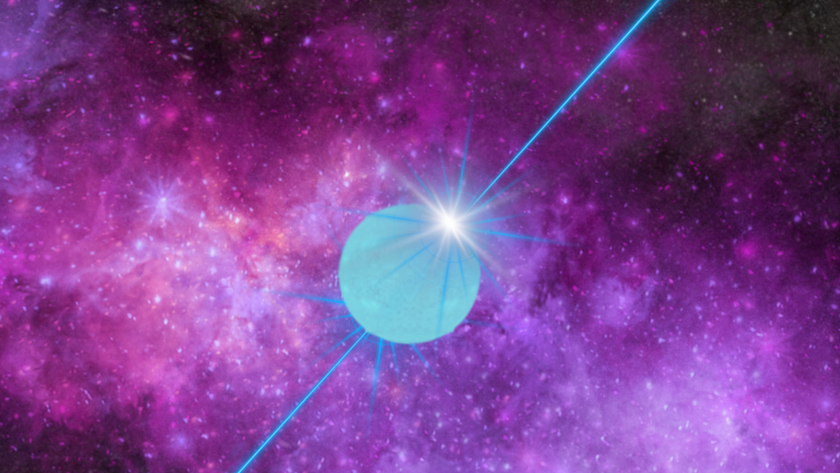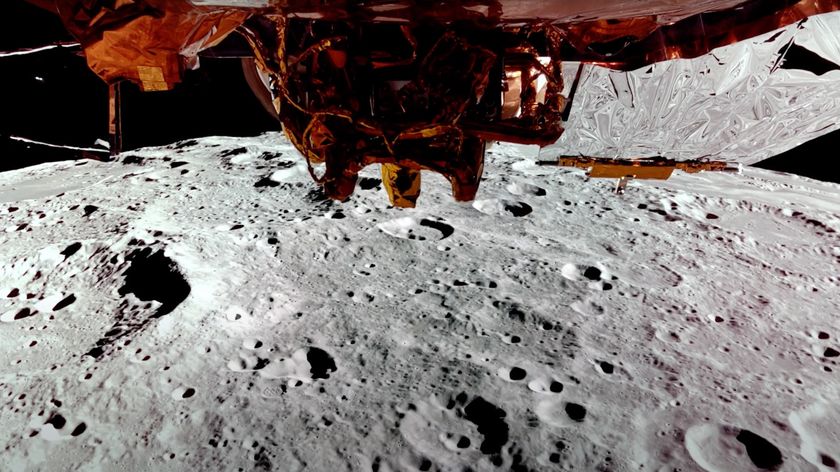Black Hole Census Comes Up Way Short
An extensive survey designed to find black holes has come up surprisingly short, leaving astronomers to wonder if their theories about these cosmic gravity wells are correct.
Many large galaxies are thought to be anchored by supermassive black holes. Since black holes can't be seen, researchers find them by noting how the gravity of one affects stars in the host galaxy and also by spotting X-rays that are kicked up as matter dives toward the black hole and is superheated.
The X-rays are particularly noticeable in galaxies that are shrouded in dust. And the X-rays are thought to be a prime contributor to a background of X-rays that permeates the universe.
'We have come up short'
A team of astronomers in Europe and the United States has spent two years attempting to make a census of nearby supermassive black holes using the European Space Agency's orbiting International Gamma Ray Astrophysics Laboratory (Integral).
"Naturally, it is difficult to find something we know is hiding well and which has eluded detection so far," said Volker Beckmann of NASA's Goddard Space Flight Center and the University of Maryland. "Integral is a telescope that should see nearby hidden black holes, but we have come up short."
Beckmann is the lead author of a report on the results to be published in an upcoming issue of the Astrophysical Journal.
Get the Space.com Newsletter
Breaking space news, the latest updates on rocket launches, skywatching events and more!
Other surveys have explored lower-energy X-rays in the background. The new observations represent the second of two efforts to examine very high-energy X-rays. Both have reached similar conclusions.
"The hidden black holes we have found so far can contribute only a few percent of the power to the cosmic X-ray background," said study leader Loredana Bassani of the Italian research group IASF.
What's going on?
So if hidden black holes make up the bulk of the X-ray background, as had been thought, then they must be located much further away in the more distant universe. When scientists look across the universe, they're also looking back in time, so these more distant galaxies are also seen when they were much younger, in some cases while they were infants or teens in the growing universe.
It could be, the researchers speculate, that in the local universe most supermassive black holes are mature and have had time to eat or blow away all the gas and dust that once enshrouded them, leaving them less likely to produce X-rays.
Or, perhaps the undiscovered black holes are more hidden than astronomers realized.
"The fact that we do not see them does not necessarily mean that they are not there, just that we don't see them," Bassani said. "Perhaps they are more deeply hidden than we think and so are therefore below even Integral's detection limit."
- The Strangest Things in Space
- Missing Black Holes Found
- The True Shape of Black Holes
- Survival Tips for Black Hole Travelers
- VIDEO: Black Holes Warping Time & Space
Join our Space Forums to keep talking space on the latest missions, night sky and more! And if you have a news tip, correction or comment, let us know at: community@space.com.

Rob has been producing internet content since the mid-1990s. He was a writer, editor and Director of Site Operations at Space.com starting in 1999. He served as Managing Editor of LiveScience since its launch in 2004. He then oversaw news operations for the Space.com's then-parent company TechMediaNetwork's growing suite of technology, science and business news sites. Prior to joining the company, Rob was an editor at The Star-Ledger in New Jersey. He has a journalism degree from Humboldt State University in California, is an author and also writes for Medium.
Most Popular




